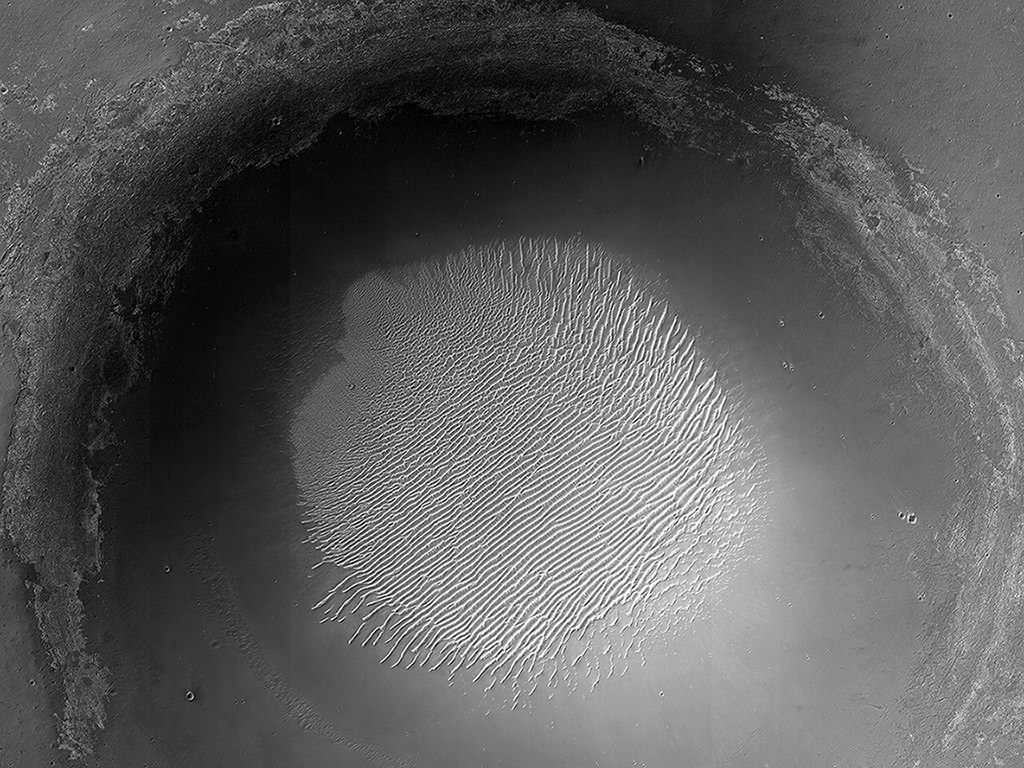Mars, that ever-changing and beautiful Red Planet practically next door to us, is one of the most well-studied places humans have in the universe. We've sent spacecraft there for about 50 years. Yet there's still a lot of mysteries out there.
NASA's Mars Reconnaissance Orbiter is among the investigating spacecraft in the area checking out the planet's past and looking for any interesting clues to tell us more about how Mars -- and the Earth, and the solar system, and planets in general -- formed. Mars had a wetter past (
as the rovers have showed us
), but where the water went and why its atmosphere are so thin are among the things scientists are trying to understand.
Luckily for us, the catalog of the University of Arizona's High Resolution Imaging Science Experiment (HiRISE) is easily available online for all of us to marvel at. Here are just some of the pictures sent back from across the solar system. To see more, look below and
check out this HiRISE web page
.
[caption id="attachment_112391" align="alignnone" width="580"]
This image from Mars shows a variety of sandy features: ripples, transverse aeolian ridges (which are larger and lighter), dunes (dark) and draa (very large bedforms that are greater than 1 kilometer or 0.62 miles). Credit: NASA/JPL/University of Arizona[/caption]
[caption id="attachment_112392" align="alignnone" width="580"]
A Martian alluvial fan on the floor of a 60-kilometer (38-mile) crater near the equator of Mars. Scientists commonly study these features to learn more about the Red Planet's wet past. Credit: NASA/JPL/University of Arizona[/caption]
[caption id="attachment_112393" align="alignnone" width="580"]
Shiny dunes on Mars taken by the HiRISE camera on the Mars Reconnaissance Orbiter. Credit: NASA/JPL/University of Arizona[/caption]
[caption id="attachment_112394" align="alignnone" width="580"]
Dunes migrating across the surface of Mars. Picture taken by the HiRISE camera on the Mars Reconnaissance Orbiter. Credit: NASA/JPL/University of Arizona[/caption]
 Universe Today
Universe Today
